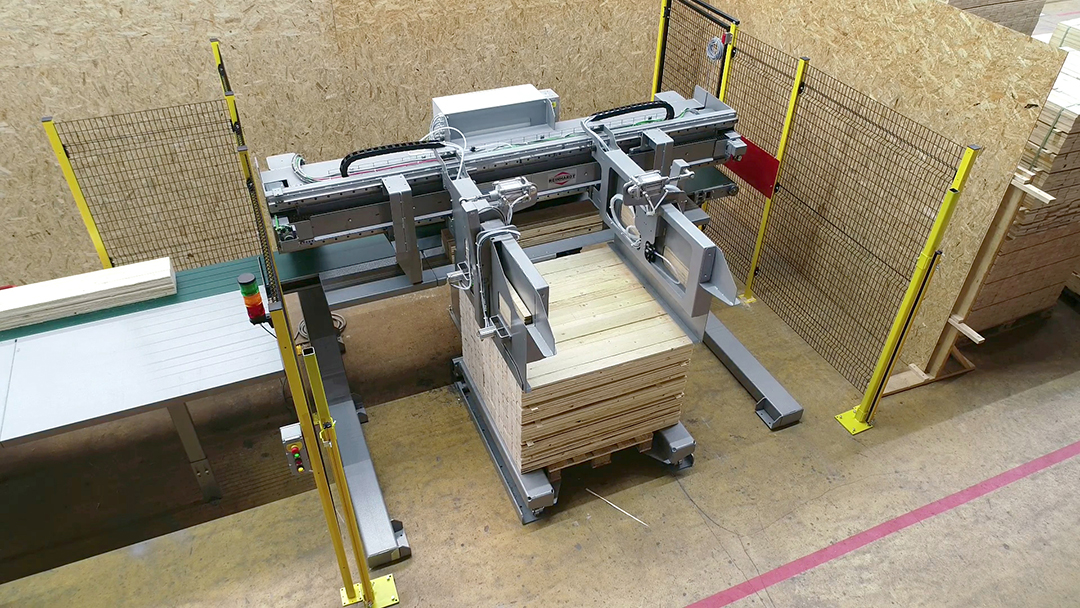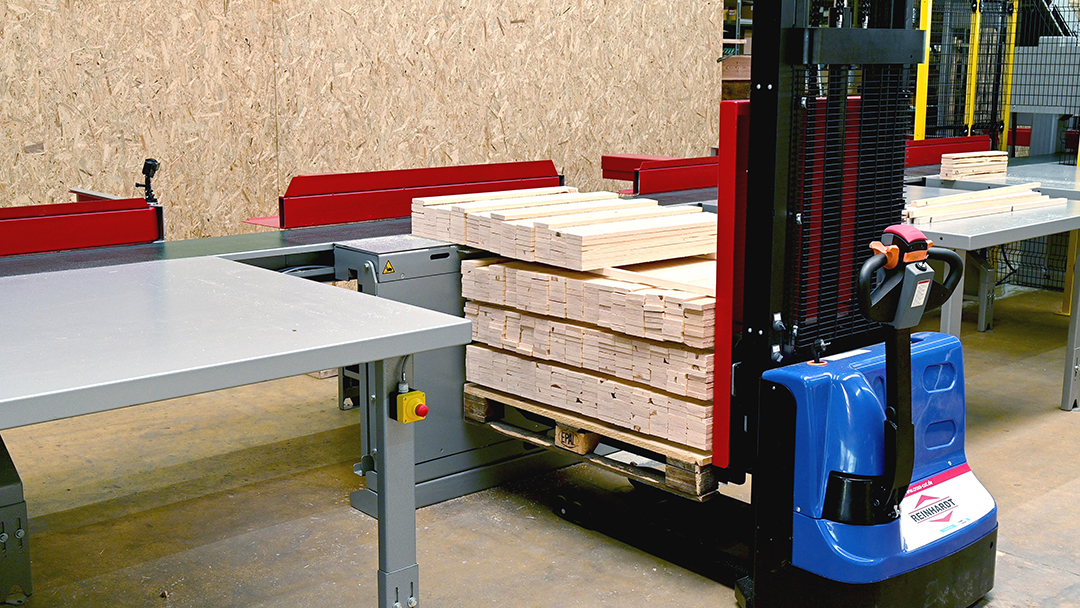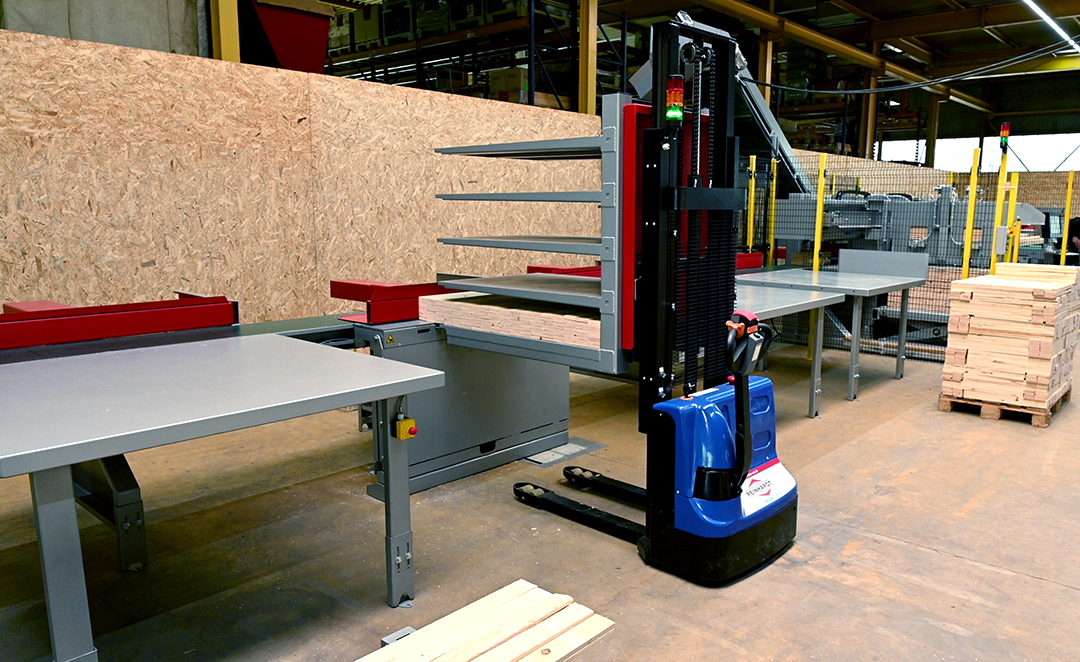 The fully automatic stacking machine adjusts itself to the length to be stacked and also places sticks.
The fully automatic stacking machine adjusts itself to the length to be stacked and also places sticks.
Work on a cross-cut system is often hard and involves physical exertion. On average, one operator moves about 40 cubic metres of timber per shift, first from the stack onto the system and then back onto pallets after cutting. In order to fully utilize the capacity of the powerful cross-cut system, the company often needs even more than just one operator. However, it is getting more and more difficult to find or keep enough personnel for this arduous activity. As a result, these systems often are not used efficiently. The makers of the Reinhardt brand (Paul Maschinenfabrik) have recognized this problem and want to counter it with a fully automatic and a semi-automatic stacking solution.
"We have listened carefully to our customers and have developed two stacking solutions covering numerous needs," Joaquín García, Sales Manager of the Reinhardt brand, is convinced. "We have redesigned our fully automatic stacking machine, which has proven successful for many years, and have reduced it to a necessary minimum. Less motors and sensors make the new stacking machine less expensive and more reliable". The Fully Automatic Stacker (FAST) adjusts itself to the length to be stacked and also places sticks. The system has been optimized for use on the cross-cut saw with push-feed system and stacks not only individual workpieces, but also workpiece packs. The operator no longer has to manually stack the cut sections from the timber collection table onto pallets, but only has to transport the finished packs away using a pallet truck or forklift.
Since a fully automatic stacking machine is oversized for many applications, Reinhardt has also developed a clever, flexible and inexpensive solution for efficient cutting. The semi-automatic stacking system Stack&Move (SAM) primarily relieves the operator of the physical strain caused by the stacking process. The system essentially consists of three elements: a special pneumatic ejector (optionally also motor-driven), a docking station with folding table and an electric stacker. The electric stacker is fitted with a control system that is connected to the cross-cut saw control system and can be used in three different operating modes: With the folding table up, the ejector pushes the workpieces onto the support, and the operator stacks them manually. As an alternative, the electric stacker must be docked, the pallet moves to working height and the workpieces are pushed directly onto the stacker. The operator simply places the sticks between the layers, acknowledges this process and the stacker automatically moves to the next position. Stacking with muscle power is no longer necessary. With the optional SAM rack, stacking works fully automatically, without the need for sticks. The operator transports the filled pallet (or rack) by means of the electric stacker to the next work step in the production process. "When the electric stacker is not in operation at the cross-cut system, the customer can use it to carry out other activities in the company," García explains.
Both stacking solutions are used on the SlimLine push-feed saw and can also be combined on a cross-cut saw. It is also possible to retrofit a SlimLine with both the Fully Automatic Stacker and the Stack&Move system. "With these two innovations, we have implemented the impulses of our customers and have created practical solutions for an easier everyday working life at the cross-cut saw," says García.


